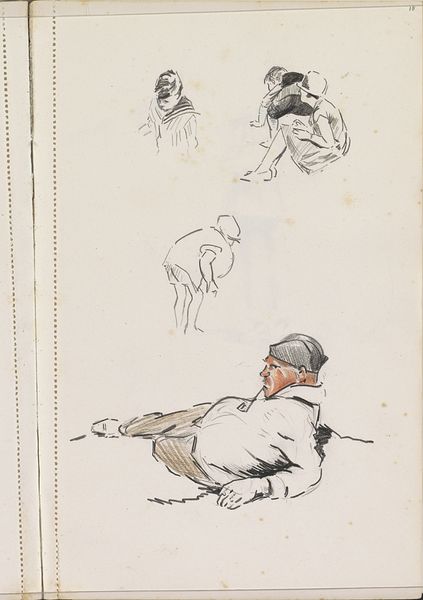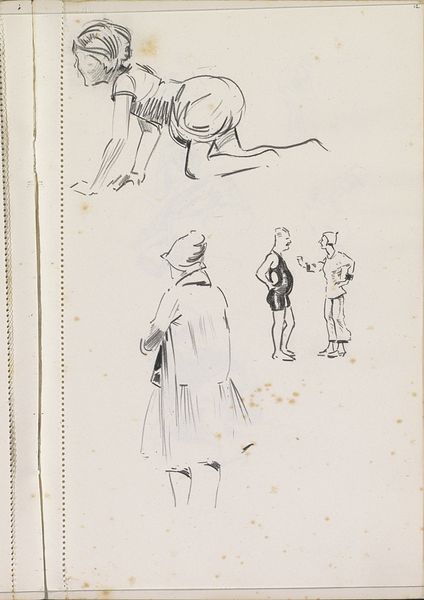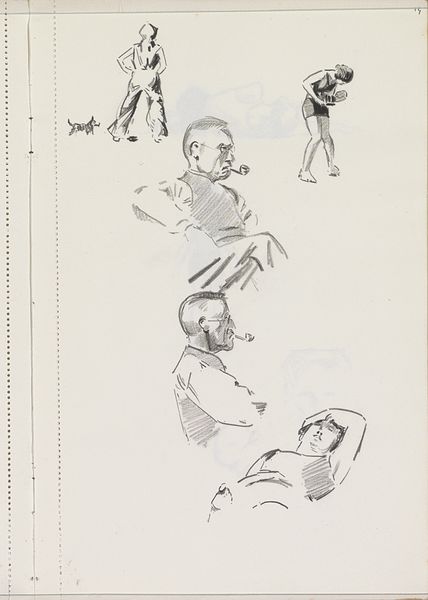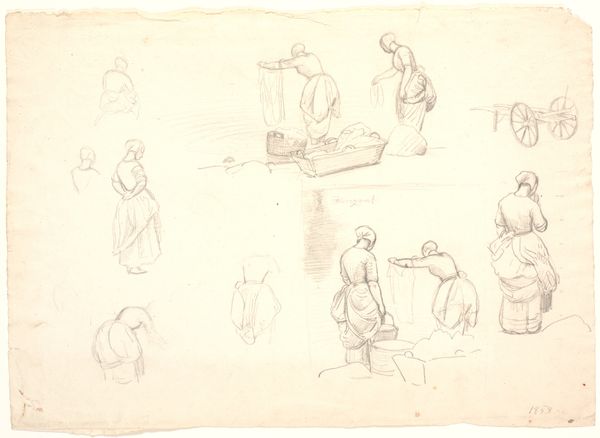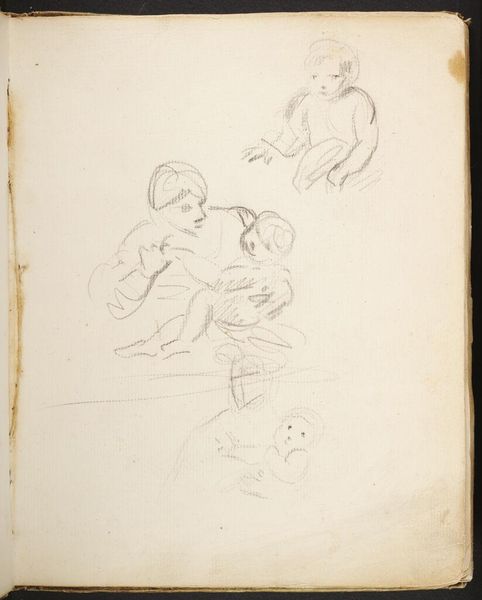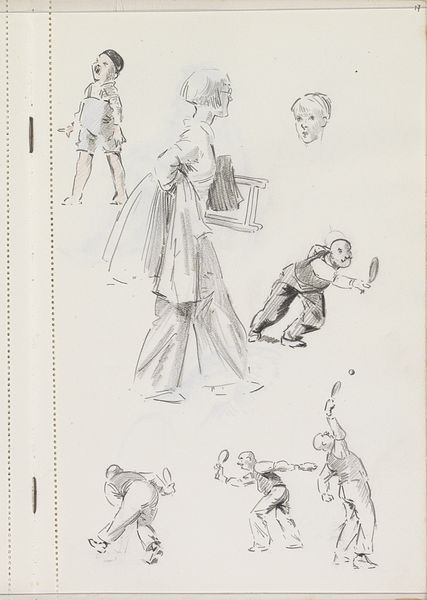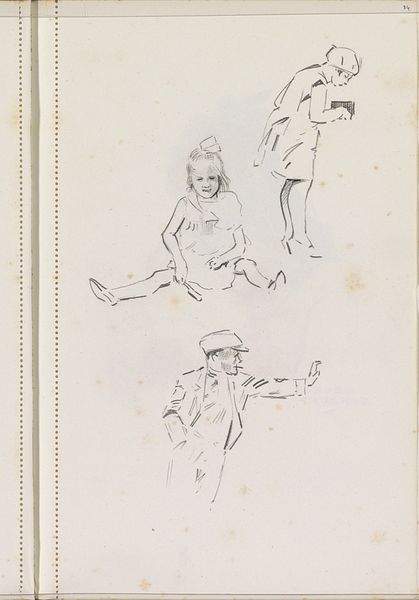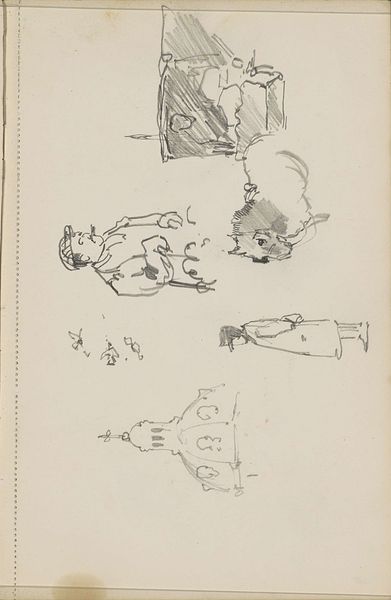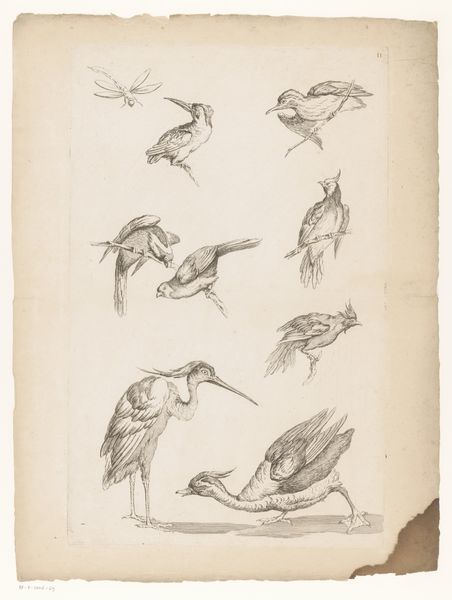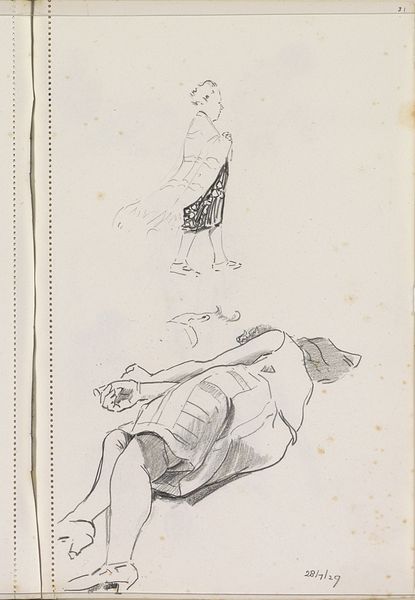
drawing, paper, ink
#
portrait
#
drawing
#
quirky sketch
#
figuration
#
paper
#
personal sketchbook
#
ink
#
idea generation sketch
#
sketchwork
#
ink drawing experimentation
#
detailed observational sketch
#
line
#
sketchbook drawing
#
storyboard and sketchbook work
#
sketchbook art
#
modernism
#
initial sketch
Copyright: Rijks Museum: Open Domain
Editor: This is Otto Verhagen’s “Figuurstudies,” from around 1928 to 1930, done with ink on paper. It's a page of figure sketches. They feel very immediate and sort of spontaneous. What strikes you about this piece? Curator: For me, it's about the labor of observation made visible. We see Verhagen grappling with form through a specific and traditional medium – ink on paper. Consider the paper itself, likely mass-produced, indicative of broader industrial processes making art supplies accessible. How does that inform our reading of what seems at first glance to be spontaneous creative output? Editor: I see what you mean. So, it's not just the finished sketches, but also the context of readily available materials that shape the artwork? The "means of production," so to speak? Curator: Precisely. And what of the subjects themselves? They're seemingly ordinary people caught in everyday acts. Note the interplay between artist and subject, the dynamic labor of seeing, selecting, and representing. Verhagen isn’t necessarily interested in idealization, more in capturing the essence of movement and form. Is it then, simply "art," or skilled labour? Editor: I guess I always thought of a sketchbook as very personal. But placing it in a material context like this changes things. Does this mass-produced paper somewhat democratize the artistic process, making it less about rarefied skill and more about accessible tools? Curator: It invites the question, doesn't it? By focusing on the materials and production, we challenge notions of individual genius. Verhagen becomes not just an artist, but a worker engaging with specific tools within a defined socio-economic framework. We're no longer looking at just the aesthetic surface, but a web of processes. Editor: That makes me think about what's considered "art" versus "craft." Curator: Absolutely, where do we draw that line, and who gets to decide? Editor: That's a really interesting perspective; I'll definitely look at sketchbooks differently now. Thanks! Curator: My pleasure. It's all about seeing the unseen structures behind what appears to be simply a collection of figures on paper.
Comments
No comments
Be the first to comment and join the conversation on the ultimate creative platform.
